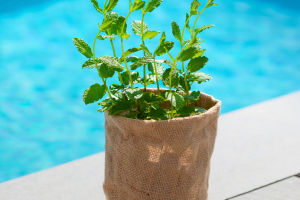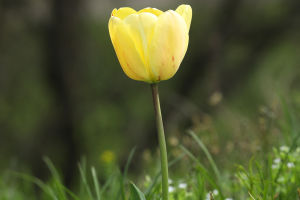Bellflowers, known for their delicate, bell-shaped blossoms and vibrant hues, are a favorite among florists and flower enthusiasts alike.
These charming blooms, scientifically known as Campanula, are versatile and add a touch of whimsy and elegance to any floral arrangement.
Whether you're creating a centerpiece for a special occasion or simply brightening up your home, bellflowers can be the perfect choice. Let's explore the art of flower arrangements with bellflowers, offering tips on how to use them effectively and some creative ideas for incorporating them into your designs.
Understanding Bellflowers
Before diving into flower arrangements, it's essential to understand the characteristics of bellflowers. Bellflowers come in a variety of species, with colors ranging from soft pastels to deep purples and blues. Their bell-shaped petals and slender stems make them ideal for adding height and texture to arrangements. Bellflowers are also long-lasting, making them a practical choice for both fresh and dried arrangements.
The most common varieties used in floral arrangements include the Canterbury Bells (Campanula medium), which are known for their large, showy flowers, and the Peach-leaved Bellflower (Campanula persicifolia), which has a more delicate appearance. These flowers typically bloom in late spring to early summer, making them a popular choice for seasonal arrangements.
Selecting the Right Flowers
When arranging bellflowers, it's essential to choose complementary blooms that enhance their natural beauty. Bellflowers pair well with other garden flowers such as roses, peonies, and daisies. Their tall, slender stems contrast beautifully with round, fuller flowers, creating a balanced and visually appealing arrangement.
For a classic and elegant look, combine bellflowers with roses in soft pinks and whites. This combination creates a romantic and timeless bouquet, perfect for weddings or special occasions. Alternatively, for a more rustic and natural arrangement, pair bellflowers with wildflowers like daisies and Queen Anne's lace. This combination evokes a sense of countryside charm and is ideal for casual gatherings or summer events.
Arranging Bellflowers
The key to a successful flower arrangement is balance and harmony. When working with bellflowers, it's important to consider the height and placement of the blooms within the arrangement. Start by selecting a vase or container that complements the style of your arrangement. For a traditional look, opt for a classic glass or ceramic vase. For a more rustic feel, consider using a mason jar or a vintage pitcher.
Begin by placing the bellflowers in the vase, allowing their tall stems to create height and structure. Next, add the complementary flowers, making sure to vary the heights and shapes to create depth. Be mindful of the color palette, ensuring that the colors blend seamlessly without overpowering each other.
For a more dynamic arrangement, consider incorporating different textures and greenery. Ferns, eucalyptus, or ivy can add a lush, verdant backdrop to the bellflowers, enhancing their delicate appearance. Additionally, adding a few sprigs of lavender or baby's breath can soften the overall look and add a touch of fragrance.
Creative Ideas for Bellflower Arrangements
Bellflowers are incredibly versatile and can be used in various creative ways beyond traditional bouquets. Here are a few ideas to inspire your next floral project:
1. Hanging Arrangements: Bellflowers’ long stems make them ideal for creating hanging arrangements or floral chandeliers. Combine them with trailing vines and small, cascading blooms for a stunning display that adds a touch of nature to any space.
2. Table Centerpieces: For an elegant table centerpiece, create a low arrangement with bellflowers, roses, and peonies. Use a shallow bowl or a wide vase to allow the flowers to spread out and create a lush, full look.
3. Wreaths: Bellflowers can be used to create beautiful, seasonal wreaths. Combine them with other summer flowers and greenery to create a wreath that can be hung on a door or used as a centerpiece.
4. Mixed Arrangements: Bellflowers can be mixed with various other flowers and foliage to create diverse and interesting arrangements. Try combining them with sunflowers and dahlias for a vibrant summer bouquet, or mix them with lilies and irises for a more sophisticated display.
Caring for Bellflower Arrangements
To ensure your bellflower arrangements last as long as possible, proper care is essential. Start by cutting the stems at an angle before placing them in water. This allows the flowers to absorb more water and stay fresh longer. Change the water every two days and trim the stems slightly each time to maintain their freshness.
If you're using bellflowers in a dried arrangement, hang the flowers upside down in a cool, dark place until they are fully dried. Once dried, they can be used in wreaths, potpourri, or as standalone decorations.
Bellflowers are a delightful addition to any flower arrangement, offering a blend of elegance and charm that can elevate any space. With their versatile nature and wide range of colors, they can be used in various creative ways to suit any occasion. Whether you're a seasoned florist or a beginner, working with bellflowers is a rewarding experience that brings the beauty of nature into your home. By following these tips and ideas, you can create stunning arrangements that showcase the timeless elegance of bellflowers.


